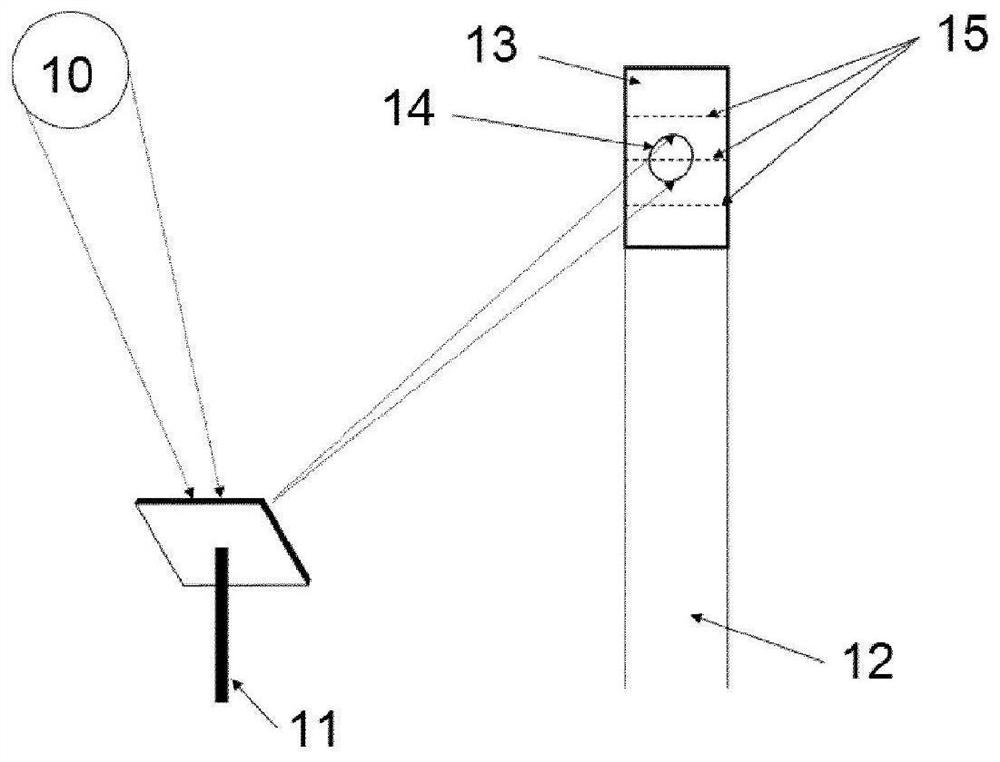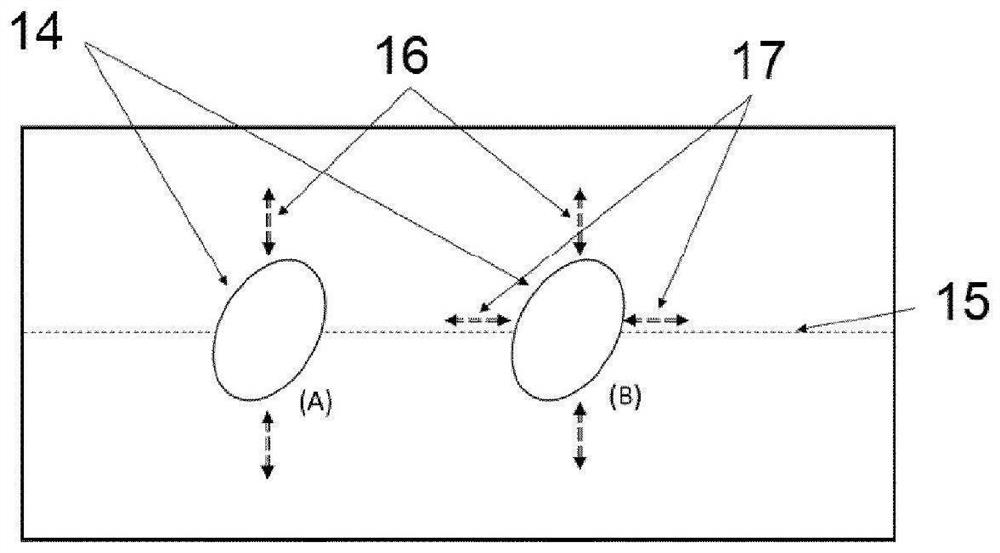Asymmetric solar receiver
A technology of solar energy and receivers, which is applied in the direction of solar thermal collectors, solar thermal energy, and components of solar thermal collectors, and can solve the problems of secondary concentrators increasing the complexity of tower solar equipment
- Summary
- Abstract
- Description
- Claims
- Application Information
AI Technical Summary
Problems solved by technology
Method used
Image
Examples
Embodiment Construction
[0051] As described in the previous section, the central tower solar concentrating technology mainly consists of a solar field consisting of a structure with a plurality of individual mirror elements or heliostats (11), which are usually constructed For a large spherical cap or paraboloid, the fixed receiving element is located at the focal point of the spherical cap or paraboloid. figure 1 A schematic diagram of a tower solar concentrator system is described in . The solar radiation from the sun (10) strikes the reflective surface of the heliostat (11) through the specific configuration of the tower solar concentrating system (the reflective surface of the heliostat (11) usually consists of one or more facets) , tracking the movement of the sun (10) and concentrating and focusing the sun's rays on a tower (12), the tower (12) including a solar receiver (13) at the top of the tower (12). The receiver (13) thus absorbs the radiation from the heliostat (11) and transfers the ra...
PUM
 Login to View More
Login to View More Abstract
Description
Claims
Application Information
 Login to View More
Login to View More - Generate Ideas
- Intellectual Property
- Life Sciences
- Materials
- Tech Scout
- Unparalleled Data Quality
- Higher Quality Content
- 60% Fewer Hallucinations
Browse by: Latest US Patents, China's latest patents, Technical Efficacy Thesaurus, Application Domain, Technology Topic, Popular Technical Reports.
© 2025 PatSnap. All rights reserved.Legal|Privacy policy|Modern Slavery Act Transparency Statement|Sitemap|About US| Contact US: help@patsnap.com



